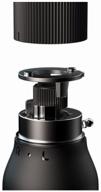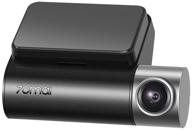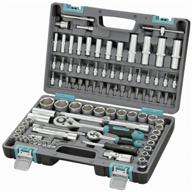
Review on Adjustable Converter 1 25 36V Efficiency Regulator by Nick Granner

Received 4 packs, all 4 are good! Use a DC filament tension regulator for the vacuum tube.
Seems to be good value for money, definitely cheaper and smaller than I could make myself. My use is as a DC filament voltage regulator in a tube audio amplifier. Each was in a sealed gray ESD smoke bag, then these 4 were in a larger gray ESD smoke bag (also sealed). This large outer box was wrapped in several layers of 1/4" bubble wrap and then placed in a bubble envelope (which fit in my cluster mailbox along with lots of junk mail). Hence 5 stars for the packaging. All 4 shortly after opening of the box they arrived.I really only needed one at this point but I couldn't refuse the discount for buying 4 packs knowing I will be using them very soon for other projects I have planned.Like As other reviewers have said, I first turned the trims counterclockwise 10 turns at a time, then hooked them up one at a time into a 0-28V 7.5A power supply, monitored the output on a Fluke 77BN calibrated multimeter, and one of these 10 ohm 25W golden metal fin power resistors (chassis mount) connected as a load (resulting in a current of 0.63A being supplied by the small module) and it was a good test for my direct application as I will be using it on a lamp that draws 0.6A at 6.3V for the filament power. ed with a 12v input that would output about 1.357 volts when the trim pot was adjusted counterclockwise so they were all identical in that regard. I then adjusted the trim pot until I saw 6.3 VDC on the Fluke multimeter. Then I changed the input voltage to 9V and the output didn't change. Then I changed the input voltage to 5V and the output voltage from 6.3V under load hasn't changed YET! Although these things are marketed as "DC-DC converters" they can actually go from at least 5V input to 6.3V output as well, so I tested them. Bonus luck, so 5 stars for that too. (I forgot to mention that on each of the 4 modules I glued the small heatsink that comes with each regulator IC before I started testing). Also, I checked if the 6.3V output would change if I removed the pull-up resistor when applying the input voltage. The answer is NO, the output voltage didn't change even 1mV no matter the input voltage was 5V, 9V or 12V, removing and installing the load resistor didn't affect the output voltage at all. So very stable, 5 stars again. Since I was doing these tests at work, I had all day to test them. After initially testing all 4 as described, I performed a 2 hour "fire" test on each. . The circuit board itself (touching the ground on the back of the board and the heatsink of the controlling microcircuit) was barely noticeably warmer than the skin temperature of my finger after 2 hours of operation under load. The small toroidal core (or the wire wrapped around it) WAS a little warm after the 2 hours of burning, but not so much that I wanted to take my finger away, but definitely warmer than a circuit board or a regulator IC, I can live with that. Then I did what I had drawn on my schematic for my amp, which was to put a 1000uF 50V electrolytic capacitor on the output, along with a 0.01uF ceramic disc capacitor (I drew an electrolytic capacitor on my schematic , which is located directly at the exit). output of the module and then a 0.01uF capacitor located directly on the lamp socket glow pins). After that I connected the X1 probe to the load resistor and looked at the ripple on a calibrated Tektronix 2246 oscilloscope; Waves were practically zero. with these two capacitive filters at the output (less than 0.5mV). So I am satisfied that they will be very useful for the DC filament regulator in my vacuum tube audio projects and are vastly superior to the LM338 5 amp linear regulator due to much lower heat dissipation - this is in fact several orders of magnitude less heat than I have obtained from LM338 filament linear voltage regulators that I have used in the past. So for my app again 5 stars. For those of you who don't think in Metrica and are too lazy to open another tab in your browser to use the free length calculator, here are the measurements: 2.125"L x 1.0"W x 0.625" "H. Finally, I'm so tired of a lot of these Chinese products that claim you can use them with up to 32V input (for example) BUT they only give you 35V capacitors on the board. It's just horrible engineering, when they have capacitors rated at 35V, you'd better not put more than 24V or so on (to have a comfortable tolerance. I'm very happy to report that the input and output capacitors on this board are rated at 50V. And finally, well deserved 5 stars! But then again, I don't think I would, consistent with good engineering practice, ask more than 2A from them (2.5A per dispute) if I ( in the long run) a device with se at its maximum current or voltage rating operate with easily machined aluminum front and rear panel) housing a 3.8W RMS mono all-triode push-pull amplifier driving a front panel mounted Visaton FR8WP 3.3" 8- Ohm full-range speaker drives. There will be one of those handy MP3/FLAC player modules on the front panel, a volume and tone control, and a "mix" control that allows me to constantly adjust the mix of the left and right channel inputs in mono. This allows me to choose hard left, hard right, or a mix of both for my mono signal (depending on what sounds best with the source material). It uses a 12-pin Compactron 6AC10 (3 Hi-mu triodes in one shell) for the SRPP preamp and a transformer-powered ported port (Hammond 125D); and a 9-pin med-mu 5687 double triode for the push-pull output stage (output transformer Hammond 125H PRI = 10K SEC = 8 ohms). When 300V is applied to the 5687 you get a maximum net output of 3.8W from a single lamp. Derating from 300V to 260V for the phase inverter (with 1N5311-1 DC diode in the cathode) and derating from 260V to 240V for the SRPP preamp (with 1N5311-1 DC diode in the cathode). It won't be full hi-fi, but that's not the point. It will be an 8 inch cube which will allow me to listen to audio books and recitations of the Holy Quran. Thus, in this application, the transformer response from 150 Hz to 15 kHz agrees well with the speaker response from 100 Hz to 20 kHz. Likewise, 3.8W of output power is a reasonable match. The speakers have a maximum power limit of 15W, and a speaker sensitivity of 84dB/1W/m delivers enough load to listen on a bedside table or in a bedroom, and it will likely be loud enough to fill a small room too (8' x 8' or so) with a sound loud enough to make normal conversation impossible. The device is comfortably within its 5A rating. The way I'm going to mount this module should probably be the same as you: It mounts on the side or back of the case, end cap down and a small heatsink . This allows the module to be cooled naturally by convection, and a hot lift won't heat the pot (which is plastic and prone to melting or failure. Not that I expected (based on today's testing) that it would would emit a lot of heat, but it's better to plan ahead and play it safe, right? This mounting position also allows the airflow to rise up through the module's rear bottom plate (which dissipates some of the controller's heat). The module fits #4-40 hardware, but if you don't have a low profile nut for the top, you're better off using a nylon nut as it's pretty close to the solder inlet and outlet tabs on the top of the PCB. Below are the mounting holes surrounded by earth so don't worry if you use metal stands, nothing short on the bottom.
- Great price
- Some nuances
New products
Comments (0)
Top products in 🚪 Garage & Shop

🌟 Revolutionary Multi-Surface Cleanliness with Crosswave Spinwave 22951

5 Review
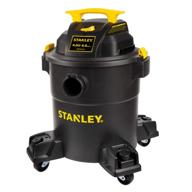
Gallon Wet Vacuum with Powerful Horsepower by Stanley

8 Review

Maximize Your Moving Efficiency with Shoulder Dolly Moving Straps!

6 Review
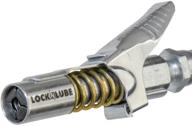
🔒 LockNLube Fittings: Unbeatable, Best Selling, Long Lasting & Rebuildable Solution

8 Review


